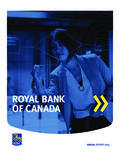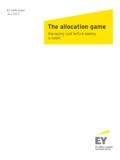Transcription of Blended finance - OECD
1 Blended finance Mobilising resources for sustainable development and climate action in developing countriesPOLICY PERSPECTIVES WE NEED TO MOVE BEYOND ANALYSING AND TALKING. IT S TIME FOR MORE CONCERTED ACTION TO ENHANCE OUR MECHANISMS OF DEVELOPMENT finance AND CREATE INNOVATIVE PATHWAYS OF CHANNELING INVESTMENT FOR sustainable DEVELOPMENT. CHARLOTTE PETRI GORNITZKA, CHAIR, DEVELOPMENT ASSISTANCE COMMITTEE THE DEVELOPMENT CHALLENGES TODAY THAT CONNECT DIVERSE SOCIETIES IN NEW WAYS INCLUDING THE REFUGEE CRISIS PENETRATING DEVELOPING AND DEVELOPED COUNTRIES AND CLIMATE-RELATED DISASTERS LIKE HURRICANE IRMA EXTEND BEYOND CURRENT FINANCING LEVELS AND BEG FOR MODERN APPROACHES.
2 JORGE MOREIRA DA SILVA, DIRECTOR, OECD DEVELOPMENT CO-OPERATION DIRECTORATEThe global community has spoken loud and clear: more resources must be mobilised to end extreme poverty and mitigate the effects of climate change. Blended finance - an approach to mix different forms of capital in support of development - is emerging as an important solution to help meet the billions to trillions agenda. For development co-operation providers, the scaling up of this approach needs to be based on a good understanding of its potential in supporting developing countries meet the SDGs and Paris Agreement. This Policy Perspectives draws on recent OECD work, including the upcoming 2018 report Making Blended finance Work for the SDGs, the draft OECD DAC Principles on Blended finance and work under the OECD Development Assistance Committee (DAC) on measuring the amounts mobilised by official development finance interventions.
3 SHUTTERSTOCK01 Blended finance can help bridge the estimated USD trillion per year annual investment gap for delivering the SDGs in developing CHALLENGE: SCALING UP FINANCING FOR THE SDGS AND PARIS AGREEMENT DOMINIC CHAVEZ / WORLD BANK 2 POLICY PERSPECTIVES: Blended finance : MOBILISING RESOURCES FOR sustainable DEVELOPMENT AND CLIMATE ACTION IN DEVELOPING COUNTRIESTwo years after the Addis Ababa Action Agenda, there is still a clear gap in investment required for developing countries to meet the sustainable Development Goals (SDGs) and committments made under the Paris Agreement. In developing countries, this is estimated at USD trillion per year (UNCTAD, 2014).
4 Public development finance - from governments and donors - will not be sufficient to fill this investment the same time, the landscape for development finance is changing rapidly with private flows - foreign direct investment, private philanthropic funding, and remittances - dwarfing other sources of external finance to developing countries (Figure 1). While Official Development Assistance (ODA) remains an important support for development outcomes, it needs to increasingly catalyse additional finance and channel existing resources towards the SDGs and Paris Agreement. Blended finance is emerging as one solution with significant potential to help meet the investment gap by using public support to mobilise commercial financeSource: Estimates based on OECD statistics and World Bank : The figures shown are in net disbursements at USD current prices (in trillions).
5 Remittances are in gross disbursements. Official Development Assistance includes bilateral official development assistance and multilateral official development assistance (capital subscriptions are included with grants). Other Official Flows were negative in 2003, 2004, and 2006, and were given a null value in the graph. Total private flows at market terms include bilateral private flows (direct investments and other securities and claims) as well as multilateral private flows. POLICY 4 USD trillion (current prices)2000 2001 2002 2003 2004 2005 2006 2007 2008 2009 2010 2011 2012 2013 2014 2015 Other Official FlowsOfficial Development AssistancePersonal RemittancesPrivate Capital Fows, including FDIP rivate GrantsFIGURE 1: EXTERNAL finance TO DEVELOPING COUNTRIES, 2000 - 2015 SHUTTERSTOCK Blended finance : MOBILISING RESOURCES FOR sustainable DEVELOPMENT AND CLIMATE ACTION IN DEVELOPING COUNTRIES 3 However, commercial investors are wary of investing in developing countries, even on projects backed by a sound business case, due to high risks or uncertain returns.
6 There are several barriers to unlocking private finance for development and climate action (McKinsey, 2016; OECD 2017a): A lack of transparent and bankable pipelines for projects supporting the SDGs, coupled with high development and transaction costs for projects. A lack of viable funding models and inadequate risk-adjusted returns for projects, especially related to sustainable infrastructure in low income countries, or in areas where the poorest or most vulnerable populations are located. Unfavorable and uncertain regulations and policies, coupled with a lack of institutional capacity and weak governance, which make up the enabling environment for private investment.
7 I mpediments in the global financial regulatory system that hamper investors from investing in emerging markets due to the associated risks. SHUTTERSTOCKO fficial Development Assistance (ODA) reached record levels in 2016 totallingIn developing countries, the annual investment gap is estimated at USD trillion USD billion 4 Blended finance : MOBILISING RESOURCES FOR sustainable DEVELOPMENT AND CLIMATE ACTION IN DEVELOPING COUNTRIES02 WHAT IS Blended finance ? Using public finance in catalytic ways to attract commercial investors SHUTTERSTOCK Blended finance : MOBILISING RESOURCES FOR sustainable DEVELOPMENT AND CLIMATE ACTION IN DEVELOPING COUNTRIES 5 Blended finance : MOBILISING RESOURCES FOR sustainable DEVELOPMENT AND CLIMATE ACTION IN DEVELOPING COUNTRIES 5 Blended finance approaches make use of development finance sources, such as development assistance from donor governments and funds provided by philanthropic foundations, to mobilise additional finance - primarily from private and commercial sources - in order to address the SDGs and promote climate action in developing countries.
8 The logic behind the approach is simple. Private investors, businesses and project developers respond to and are constrained by risks and returns associated with investments. As a result, investments in developing countries with important public good dimensions may be backed by a sound business case but cannot necessarily be financed by commercial investors due to high risks associated with projects or uncertainty related to returns. In these cases, public support can be used strategically through Blended finance to improve the risk-return profile of investments in developing countries and make them more attractive to private investors. FIGURE 2: ILLUSTRATION OF HOW Blended finance WORKSBLENDED finance TRANSACTIONS / APPROACHESFINANCING SOURCESFINANCING STRUCTUREUSE OF FINANCENON-CONCESSIONALCONCESSIONAL / NON-CONCESSIONALNON-DEVELOPMENT DEVELOPMENT PUBLICP rivatePUBLICP rivateMOBILISINGO fficial development finance must increasingly be used to mobilise other sources of financing for sustainable development and climate action, with a focus on resources - such as commercial, private investment - that do not currently target : OECD (forthcoming)6 Blended finance .
9 MOBILISING RESOURCES FOR sustainable DEVELOPMENT AND CLIMATE ACTION IN DEVELOPING COUNTRIESA range of instruments are being used for blending, going beyond the more traditional loans and grants to the use of guarantees, securitisation, currency hedging, political risk insurance, etc. In this context, greater diversification of instruments could support better targeting of different risks and result in more commercial resources being targeted towards sustainable development outcomes. Amongst the different models, collective vehicles, such as funds, bring investors together to pool financing and offer opportunities for scaling up Blended finance .
10 In particular, structured funds allow donor governments to use concessional finance in a first loss position to provide a risk cushion for commercial investors. Blending can also occur through equity or debt investments in projects and companies in developing countries. For example, development finance providers and private actors invest in impact funds with the aim of generating financial returns and measurable environmental and / or social impact. OECD (forthcoming) shows that there is increasing interest in Blended finance funds, with at least 189 such funds being launched between 2000 and 2016. Development actors are finding increasingly innovative ways to blend finance through a range of instruments so as to attract commercial, private finance towards the SDGs and climate action.















